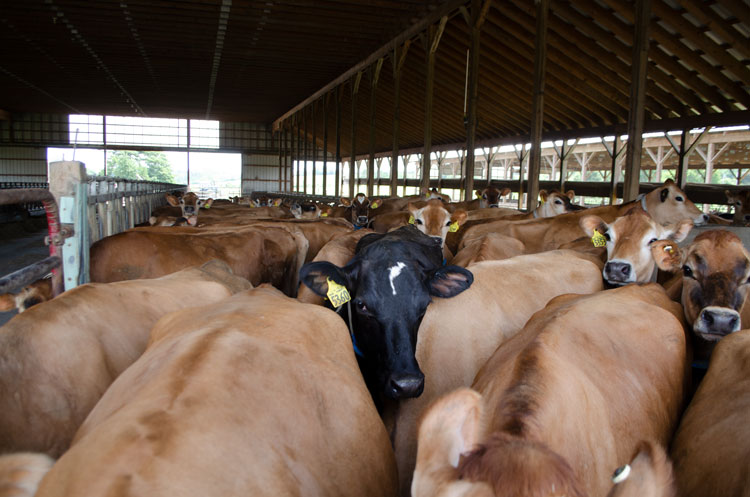
When humans are hot or uncomfortable, they tend to want a little more personal space. For some reason, cows have the opposite reaction, which leads to a problem called bunching.
“Cows do things that don’t always make sense to us,” said Brian Dougherty, an Iowa State University Extension ag engineering field specialist. He addressed bunching – when cows stand crowded together in a group – during his presentation at a dairy design workshop held in Garnavillo, Iowa.
Bunching, he explained, is a stress response. “It can be caused by heat stress, flies, or a lack of fresh air,” he said.
He pointed out that the distribution of light in the barn can also cause bunching. “Cows associate bright light with hot,” he said. “They will congregate in darker parts of the barn, even if that darker area is hotter in temperature. Cows avoid bright light when they are hot.”
To minimize bunching, Dougherty recommended even light distribution in the barn. He also mentioned fly control, especially to prevent biting flies on the legs and bellies of cows.
Additionally, uniform ventilation can keep cows from crowding together. Dougherty shared research that showed significant cooling benefits going from still air to air that is moving 200 feet per minute. On the other hand, most studies found little or no benefit for cooling when air speeds moved beyond 400 feet per minute.
Dougherty said the airflow goal should be a minimum of 200 feet per minute, especially over cow resting areas. Rather than going much faster than that, instead focus energy on getting the target airflow into problem areas. This can be done using inlets, baffles, positive pressure tubes, and recirculation fans.
If there is adequate airflow throughout the barn, cows will have more places to stand and lie down comfortably. Ideally, this will help keep bunching to a minimum.








